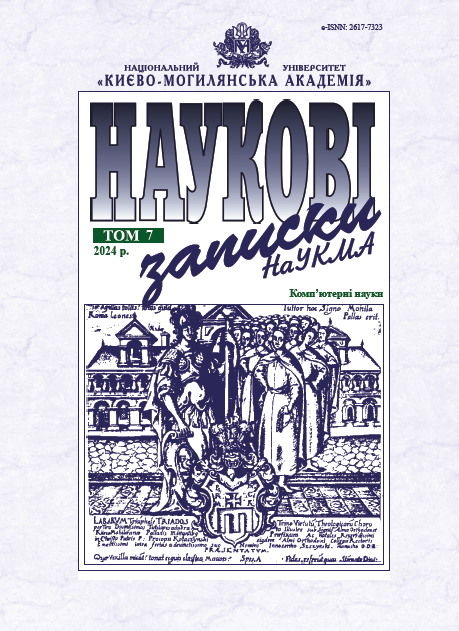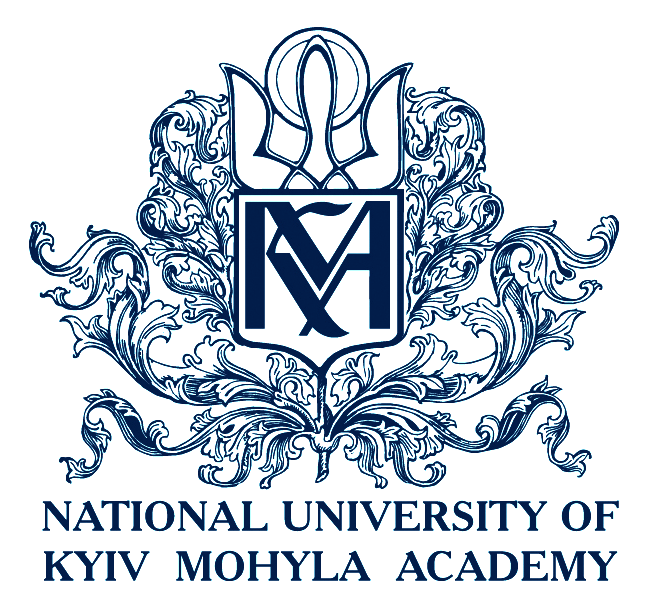Моделювання технології блокчейн
DOI:
https://doi.org/10.18523/2617-3808.2024.7.51-57Ключові слова:
блокчейн, мультиагентні системи, моделюванняАнотація
У статті розглянуто ключові характеристики технології блокчейну і підходи до комплексного моделювання блокчейну з відтворенням усіх його атрибутів. Визначено найбільш перспективний спосіб моделювання для подальшого дослідження.
Посилання
- Alharby, M., & van Moorsel, A. (2020). BlockSim: An extensible simulation tool for blockchain systems. Frontiers in Blockchain, 3. https://doi.org/10.3389/fbloc.2020.00028.
- Androulaki, E., et al. (2018). Hyperledger fabric. EuroSys ’18: Thirteenth EuroSys Conference, Porto, Portugal. https://doi.org/10.1145/3190508.3190538.
- Buchman, E., Kwon, J., & Milosevic, Z. (2018). The latest gossip on BFT consensus. arXiv. https://doi.org/10.48550/arXiv.1807.04938.
- Buterin, V. (2014). A next-generation smart contract and decentralized application platform. [White paper]. https://www.weusecoins.com/assets/pdf/library/Ethereum_white_paper-a_next_generation_smart_contract_and_decentralized_application_platform-vitalikbuterin.pdf.
- Cachin, C. (2011). Introduction to Reliable and Secure Distributed Programming (2nd ed.). Springer Publishing Company.
- Eyal, I., & Sirer, E. G. (2014). Majority is not enough: Bitcoin mining is vulnerable. International Conference on Financial Cryptography and Data Security, Christ Church. https://doi.org/10.48550/arXiv.1311.0243.
- Ferber, J. (1999). Multi-Agent Systems: An Introduction to Distributed Artificial Intelligence. Addison-Wesley Reading.
- Goodman, L. M. (2014). Tezos–A self-amending crypto-ledger white paper. https://www.tezos.com/static/papers/whitepaper.pdf.
- Gürcan, Ö. (2019). Multi-agent modelling of fairness for users and miners in blockchains. Communications in Computer and Information Science, 92–99. https://doi.org/10.1007/978-3-030-24299-2_8.
- Gürcan, Ö. (2020). On using agent-based modeling and simulation for studying blockchain systems. JFMS 2020 — Les Journées Francophones de la Modélisation et de la Simulation. https://doi.org/10.48550/arXiv.2405.01574.
- Hou, C., et al. (2021). SquirRL: Automating attack discovery on blockchain incentive mechanisms with deep reinforcement learning. Proceedings of the Network and Distributed System Security Symposium, San Diego, CA. https://doi.org/10.48550/arXiv.1912.01798.
- Larman, C. (2004). Applying UML and Patterns: An Introduction to Object-Oriented Analysis and Design and Iterative Development (3rd ed.). Prentice Hall PTR.
- Malcolm, G. (2009). Sheaves, objects, and distributed systems. Electronic Notes in Theoretical Computer Science, 225, 3–19. https://doi.org/10.1016/j.entcs.2008.12.063.
- Marchesi, L., Marchesi, M., & Tonelli, R. (2020). ABCDE — Agile blockchain DApp engineering. Blockchain: Research and Applications, 1 (1–2), 100002. https://doi.org/10.1016/j.bcra.2020.100002.
- Meldman-Floch, W. (2018). Blockchain cohomology. arXiv. https://doi.org/10.48550/arXiv.1805.07047.
- Nakamoto, S. (2008). Bitcoin: A peer-to-peer electronic cash system. SSRN Electronic Journal. https://doi.org/10.2139/ssrn.3440802.
- Neuder, M., et al. (2020). Selfish behavior in the Tezos proof-of-stake protocol. arXiv. https://doi.org/10.48550/arXiv.1912.02954.
- Nowak, T. (2010). Topology in distributed computing. [Master’s thesis]. Vienna, Austria. https://publik.tuwien.ac.at/files/PubDat_194085.pdf.
- Sagar, P. V., & Kishore, M. P. K. (2019). Sheaf representation of an information system. International Journal of Rough Sets and Data Analysis, 6 (2), 73–83. https://doi.org/10.4018/ijrsda.2019040106.
- Sapirshtein, A., Sompolinsky, Y., & Zohar, A. (2016). Optimal selfish mining strategies in bitcoin. International Conference on Financial Cryptography and Data Security. https://doi.org/10.48550/arXiv.1507.06183.
- Oliveira, M. T., et al. (2019). Towards a performance evaluation of private blockchain frameworks using a realistic workload. 22nd Conference on Innovation in Clouds, Internet and Networks and Workshops (ICIN), Paris, France. https://doi.org/10.1109/icin.2019.8685888.
- Wolfram, D., & Goguen, J. (1991). A sheaf semantics for FOOPS expressions. Proceedings of the Object-Based Concurrent Computing, ECOOP’91 Workshop, Geneva. https://www.researchgate.net/publication/220842390_A_Sheaf_Semantics_for_FOOPS_Expressions.
- Wood, G. (2014). Ethereum: A secure decentralised generalised transaction ledger. [White paper]. http://cryptochainuni.com/wp-content/uploads/Ethereum-A-Secure-Decentralised-Generalised-Transaction-Ledger-Yellow-Paper.pdf.
- Wooldridge, M. (2009). An Introduction to MultiAgent Systems (2nd ed.). John Wiley & Sons.
- Zhang, J., et al. (2020). SkyChain: A deep reinforcement learning-empowered dynamic blockchain sharding system. ICPP ’20: 49th International Conference on Parallel Processing, Edmonton, AB, Canada. https://doi.org/10.1145/3404397.3404460.
##submission.downloads##
Опубліковано
Номер
Розділ
Ліцензія
Авторське право (c) 2024 Mykola Yeshchenko

Ця робота ліцензується відповідно до Creative Commons Attribution 4.0 International License.
Автори, які публікуються у цьому журналі, погоджуються з такими умовами:
а) Автори зберігають за собою авторські права на твір на умовах ліцензії CC BY 4.0 Creative Commons Attribution International License, котра дозволяє іншим особам вільно поширювати (копіювати і розповсюджувати матеріал у будь-якому вигляді чи форматі) та змінювати (міксувати, трансформувати, і брати матеріал за основу для будь-яких цілей, навіть комерційних) опублікований твір на умовах зазначення авторства.
б) Журнал дозволяє автору (авторам) зберігати авторські права без обмежень.
в) Автори мають право укладати самостійні додаткові угоди щодо поширення твору (наприклад, розміщувати роботу в електронному репозитарії), за умови збереження посилання на його першу публікацію. (Див. Політика Самоархівування)
г) Політика журналу дозволяє розміщення авторами в мережі Інтернет (наприклад, у репозитаріях) тексту статті, як до подання його до редакції, так і під час його редакційного опрацювання, оскільки це сприяє виникненню продуктивної наукової дискусії та позитивно позначається на оперативності та динаміці цитування опублікованої роботи (див. The Effect of Open Access).



